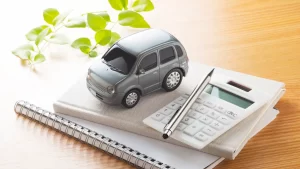What is The Right Type of Loan For You?
Borrowers face many potential options for taking out a loan. These generally range from different kinds of secured and unsecured loans, with many variations inbetween. Given the current economic climate, taking a risk on a long term loan has to be made with the knowledge that you’ll be able to repay back the interest and the principal of the loan itself. Any borrower should also think about how flexible they want their loan to be, and whether they have an asset that they can secure their loan against, or a guarantor that can be used as a form of security for a bank or credit agency.
Secured Loans
Secured loans are basically taken out against an asset, such as a house or more occasionally a car or boat, which then acts as collateral. Secured loans provide lower risk for a bank or lending agency, as they will be able to foreclose on a property and sell it onto another buyer if the loanee defaults on their payments. In this way, interest rates tend to be lower for monthly repayments on a loan. This type of loan is ideal for taking out a mortgage, but does require a long term financial commitment, and comes with expectations for a strong credit rating on the part of the borrower.
In terms of mortgage loans, these are measured against the value of a property, and can be spread over 25 to 30 years depending on appraisal value. A loanee can make a deposit of 5-10% on the initial principle of the loan, although many banks and lenders can take this as high as 20%. Moreover, additional payments can be made on a mortgage during the course of the contract without invalidating the terms of the initial loan.
This kind of loan does present some dangers. Many people take out a short term loan against the value of a property, which effectively results in a refinancing or remortgaging scheme. The contract length and interest rates for these contracts tend to be shorter and higher, and means the loaner loses out on the interest. Penalties for defaulting on a loan include a bank foreclosing on a house, while a loaner may have to pay additional costs as the result of insolvency. This doesn’t always happen though, especially if the initial secured loan was arranged as a nonrecourse deal, wherein the bank will not pursue additional damages.
Unsecured Loans
By contrast, unsecured loans are not secured against any other assets, and depend on a much more flexible arrangement. A person’s eligibility for a loan will depend on their credit history, and past history of paying back a loan. Types of unsecured loans might include student loans, and ownership of credit and store cards. The loan period tends to be shorter, with a higher APR figure. High interest payments can consequently be a problem for those taking out these loans. A loanee similarly needs to be employed, and able to pay back the loan at the terms agreed.
Other options include a guarantor loan, which effectively combines aspects of an unsecured and a secured loan. The loaner does not need property, and may even have a poor credit history. The loan is instead secured against a guarantor who does have a good credit history. They accept responsibility for defaulting on the debt, meaning that the loanee can both pay back the principal, and establish a better credit history for themselves.
Other Types
Other types of loans include debt consolidation schemes, which pays off multiple creditors in exchange for a single, long term loan. These can be highly costly, and stretch over an extended period of time. Financial advice should be sought when deciding to consolidate loans. Loanees should also be wary of short term payday loans, which usually provide a cash advance on a payday slip. The interest for these loans can be as high as 2,500 APR, and should be avoided if at all possible.


